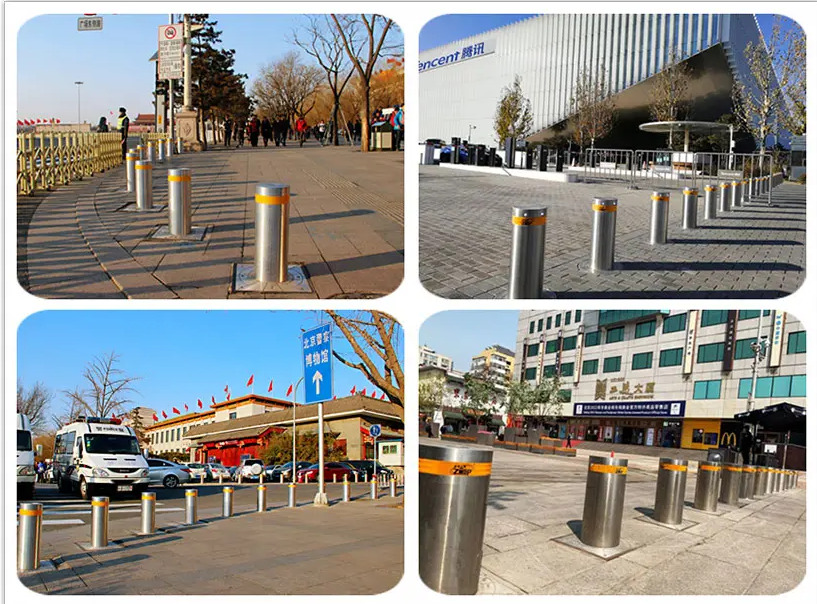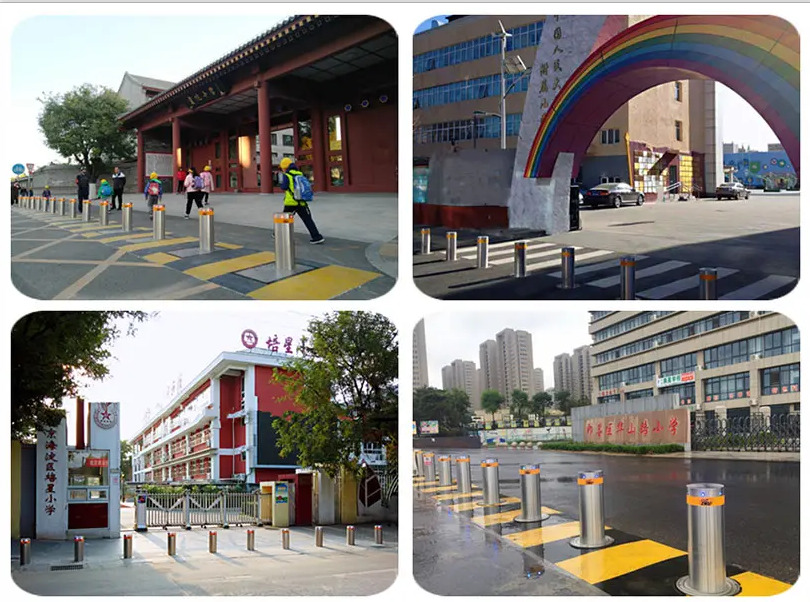Bollards are a common sight in many urban areas, serving as a protective barrier to prevent car accidents and enhance pedestrian safety. These sturdy, short posts are strategically placed to control traffic flow and protect pedestrians and buildings from potential collisions. Bollards come in various designs and materials, such as steel, concrete, and plastic, and are often used in areas with high foot traffic, such as sidewalks, storefronts, and public spaces. Their primary function is to prevent car accidents and provide a physical barrier between vehicles and pedestrians. In this article, we will explore how bollards can effectively prevent car accidents and enhance safety in urban environments.
One of the key ways bollards prevent car accidents is by creating a physical barrier between vehicles and pedestrians. In areas with heavy foot traffic, such as shopping districts and outdoor dining areas, bollards serve as a protective measure to prevent vehicles from accidentally veering onto sidewalks or pedestrian zones. By delineating the boundaries between pedestrian and vehicular spaces, bollards help reduce the risk of car accidents and protect pedestrians from potential harm.
Furthermore, bollards can be strategically placed to prevent unauthorized vehicle access to certain areas. For example, in front of storefronts or public buildings, bollards can be installed to prevent vehicles from driving onto sidewalks or crashing into the building itself. This not only protects pedestrians from potential car accidents but also safeguards the structural integrity of the building. By acting as a physical barrier, bollards effectively deter unauthorized vehicle access and mitigate the risk of car-related incidents.
In addition to preventing car accidents, bollards also play a crucial role in traffic management and control. By strategically placing bollards at intersections, pedestrian crossings, and other critical points, traffic flow can be regulated, reducing the likelihood of car accidents and improving overall safety. Bollards can also be used to create designated pedestrian zones, ensuring that vehicles adhere to designated pathways and reducing the risk of collisions between cars and pedestrians.
Moreover, bollards can be equipped with reflective materials or lighting to enhance visibility, especially during low-light conditions. This increased visibility serves as a visual cue for drivers, alerting them to the presence of pedestrian zones and potential hazards, thereby reducing the risk of car accidents. By incorporating reflective elements into bollard design, urban areas can improve safety for both pedestrians and drivers, ultimately preventing car accidents and promoting a safer environment for all.
Another important aspect of bollard usage is their ability to protect infrastructure and property from car-related damage. In areas where buildings or outdoor amenities are in close proximity to roadways, bollards act as a protective barrier, preventing vehicles from inadvertently colliding with structures or causing property damage. By strategically placing bollards around vulnerable areas, such as outdoor seating areas, storefronts, and public art installations, the risk of car accidents and property damage can be significantly reduced.
Furthermore, bollards can be designed to withstand impact from vehicles, providing an additional layer of protection against car accidents. Impact-resistant bollards are specifically engineered to absorb and redirect the force of a vehicle collision, minimizing the potential damage and reducing the risk of injury to pedestrians. This proactive approach to car accident prevention demonstrates the effectiveness of bollards in safeguarding urban environments and enhancing overall safety.
In conclusion, bollards play a critical role in preventing car accidents and enhancing safety in urban environments. By creating a physical barrier between vehicles and pedestrians, regulating traffic flow, and protecting infrastructure from potential damage, bollards serve as a proactive measure to mitigate the risk of car-related incidents. Their versatility, durability, and ability to enhance visibility make them an essential component of urban safety infrastructure. As cities continue to prioritize pedestrian safety and traffic management, the strategic placement of bollards will remain a fundamental strategy for preventing car accidents and creating safer, more pedestrian-friendly urban spaces.
ZASP provide high security level products of Hydraulic Automatic Bollards, Road Blockers and Tyre Killers, also supply Semi-Automatic / Fixed / Removable / Manually Retractable bollards for different security level selected.



